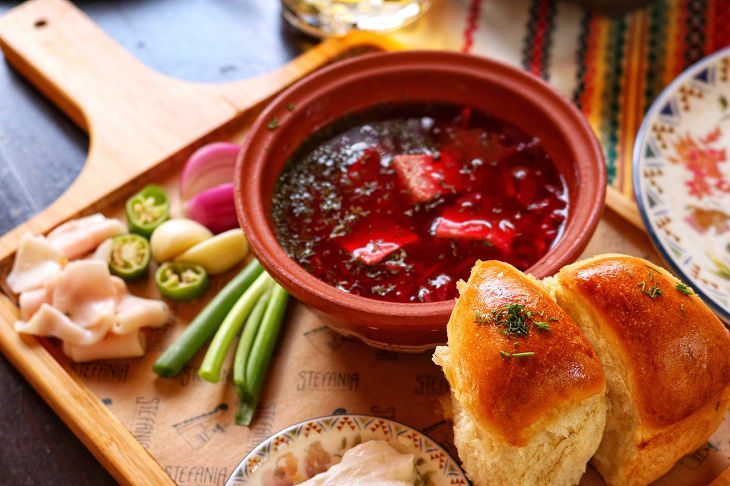There are no fewer recipes for the “most correct” borscht than there are opinions about which national cuisine this dish belongs to.
The only thing that is not disputed is that borscht should have a rich red color.
The paleness of the soup indicates that an error was made during the cooking process. However, there are rules that will help ensure that the borscht retains its ruby color.
Why does borscht become lighter?
There are many reasons why this happens. Here are some of the most common versions:
- wrong variety of beet;
- frying beets with other vegetables;
- no vinegar or lemon juice added.
If you understand these points, you can easily prepare borscht of the perfect color.

Subtleties of cooking
For borscht, they take salad beets, which are distinguished by their dark burgundy color. In addition, this ingredient is not mixed with other fried ingredients in a frying pan.
Grated beetroot is added to the borscht almost at the very end – 5-12 minutes before completion. During this time, the vegetable will give off color, but will not boil down.
The soup will not lose its rich ruby color if you sprinkle it with lemon juice (a third of the fruit) or vinegar (1 tbsp. per 1 liter of water).








